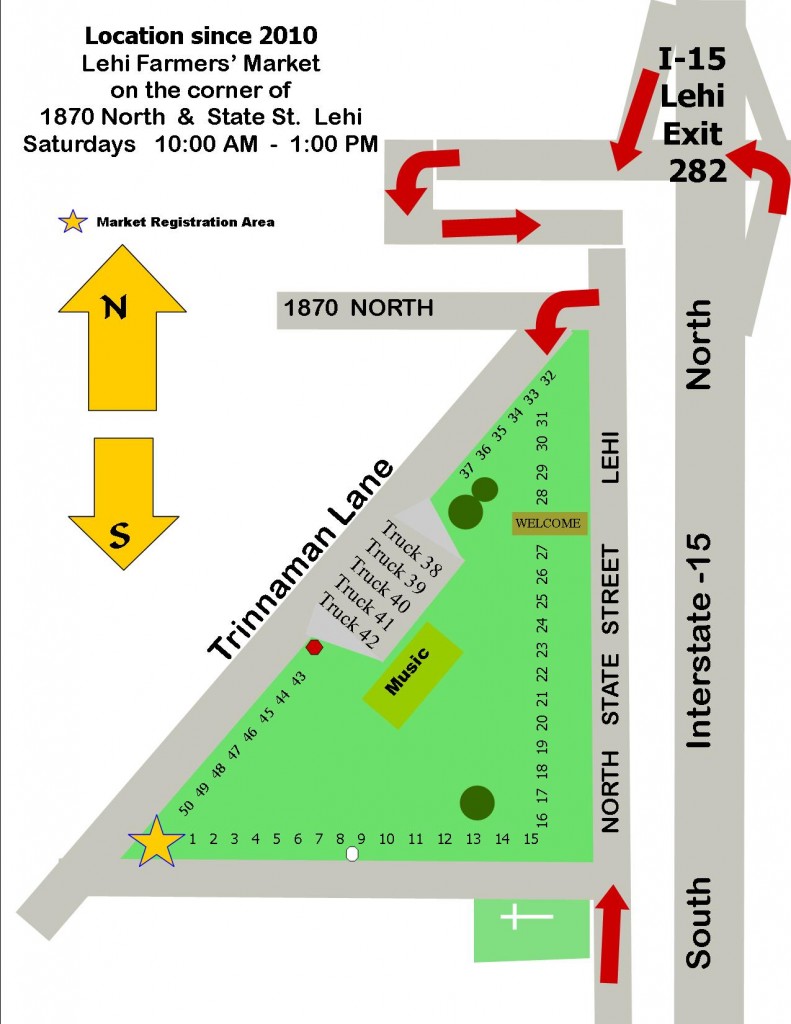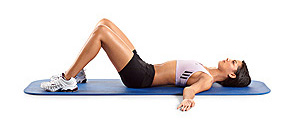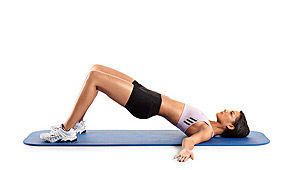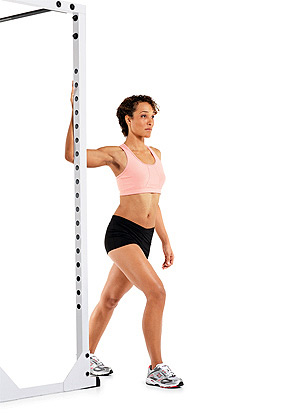Woke up this mornign with everyone else asleep except for a few stragglers headed to the bathroom. Not me, I got my running shoes on and I headed of for a morning run! After I did a little INSANITY. Pure Cardio is a kick butt workout and 537 calories in 38 minutes!! Here a some pictures from this morning!!
All posts by gshort@shortfam.com
October 9th Newsletter
![]()
CoachGShort Weekly Newsletter October 9th
This weeks article comes about based on the fact that we have a new team thread and with a new thread comes new team members.
10 Common Mistakes Made by Individuals Who Engage in Stretching Exercise
1. Not warming up before stretching. Because stretching cold muscles increases your chances of injury; you should always warm up before stretching (i.e., perform activities that will increase your body temperature enough to “warm” you up sufficiently to safely begin exercising). Contrary to popular belief, stretching is not a warm-up.
2. Not stretching the muscles you’re trying to stretch. Too many people don’t stretch what they think they’re stretching because they don’t perform their flexibility exercises properly. More often than not, either they don’t know how to do a particular exercise properly, or they make an inappropriate adjustment in their body position while stretching.
3. Not watching how much pressure you place on your ligaments. Unfortunately, some people stretch their ligaments too much (rather than stretching their muscles) when performing stretching exercises. As a result, they develop excessive ligament looseness. As such, when you’re stretching, you should always avoid holding your joints in a position that places too much weight or pressure on your ligaments.
4. Not watching how much weight you place on your joint capsules. While stretching, if you place more weight on your joints than they can safely stand, you increase the likelihood that you may damage them. Accordingly, you should avoid activities that can injure your joints, such as standing toe touches.5. Not performing a balanced stretching regimen. To avoid the consequences of stretching unequally (e.g., the muscles that receive inadequate attention tend to tighten and shorten, causing such notable conditions as rounded shoulders), it is essential that you don’t stretch in one direction without balancing out that effort by also stretching in the opposite direction.
6. Not performing each stretching exercise slowly and smoothly. You should avoid using fast, jerky, or bouncing movements when performing stretching exercises. Doing so may force your muscles to stretch to an unsafe range of motion before your nervous system has time to protect them by signaling your muscle(s) to contract.
7. Not stretching to the point of maximum extension. When you stretch, you should move your body or body segment at a controlled speed through its maximum range of motion. You reach this point when you place a mild – but not painful – stretch on the muscles. On each subsequent repetition, you should attempt to go a little bit farther, while again avoiding pain and overstretching.
8. Not performing an appropriate amount of stretching exercise. A certain degree of subjectivity exists concerning what constitutes too much or too little stretching exercise. As a rule, it is recommended that you perform stretching exercises for each of the major areas of your body. ACSM recommends that individuals perform static stretches with each stretch being held for approximately 10 to 30 seconds each. Generally, static stretches are preferred because the risk of injury is low, and they require minimal time and little assistance.
9. Not stretching often enough. At a minimum, most fitness experts recommend that stretching exercises should be performed four to five times per week, and preferably daily. As a rule, because most flexibility gains are (far too) easily lost, the basic rule of thumb is that you should stretch often.
10. Not understanding that being flexible is not synonymous with being in good shape. Flexibility is just one of the essential components of physical fitness. As such, you should combine aerobic exercise, strengthening exercises, and adherence to sound nutritional practices with your stretching exercises in order to “attain and sustain” a desirable level of fitness.

- Improved digestion and regularity
- Reduced cravings
By the end of WEEK FOUR
- Increased energy and stamina
- Lost weight
- Improved mental clarity
By the end of WEEK TWELVE
- Lost 10 pounds and 2 inches off waist on average
- Reduced risk for heart disease and other degenerative diseases
- Lowered cholesterol on average by 30% and even up to 70%
- Healthier skin, hair and nails
I truly believe in this product! I recommend giving this product a try and with the Beach Body Bottom-of-the-Bag guarantee if you are not totally satisfied in the first 30 day you can return it for a full refund (less s&h). If you are interested in trying a sample please either message me on teambeachbody.com or send me an email at gshort@shortfam.com
Beach Body Coaching Team!!!
Someone asked me why did you become a BechBody Coach? I didn’t hesitate to tell them the reasons why. It is the feel that you get when helping others. The best way I can explain it is when you do a service project for the needy you get that great feeling. But after the service project you may ask about the people that you helped but in most cases that is the only time you have contact with them, where as when you become a BeachBody you help people though their program for 30, 60, 90 and beyond.
Have you ever thought about the people around you that you could help by sharing a BeachBody product?
Who else is looking to spread the word of health and ready to “END THE TREND”?
Success Story Of the week!!
Please contact with any questions.
Gregory Short – Independent BeachBody Coach
- Teambeachbody username: CoachGShort
- Email: gshort@shortfam.com
- Twitter: http://www.twitter.com/gshort76
- Facebook: http://www.facebook.com/gshort76
- Myfitnesspal.com: gshort76
- Runkeeper.com: gshort76
- Blog: http://www.coachgshort.com
Local Fruit is the best!!!
So what are you doing Saturday morning after the Utah County Fit Club. May I suggest the Lehi Farms Market?!? I have been there in the last two weeks and I plan to go again this week. There is nothing like vine ripe fruits and veggies!!
I am going back for the Pears and Peaches.

Quick Fact
Berries are more than just summer treats: Blueberries and strawberries may help prevent high blood pressure. In a new Harvard study, people who consumed the most anthocyanins – found in high amounts in these berries – had a 12 percent lower risk of developing hypertension than those who conumed the least.
October 2nd Newsletter
![]()
CoachGShort Weekly Newsletter October 2nd
This weeks article comes about based on the fact that we have a new team thread and with a new thread comes new team members.
How to Exercise Safely during Daily Workouts


We normally sweat during a workout, which means fluid loss, which can lead to dehydration unless we are drinking adequate water before, during and after our workout. We should keep a bottle of water close at hand so that we can drink plenty of water during our workout. Ideally we should drink 8-10 8oz glasses of water daily, plus an additional glass or two during a 30 minute workout session. We can safely drink more than this, particularly in high temperatures or if we are especially thirsty.

- Improved digestion and regularity
- Reduced cravings
By the end of WEEK FOUR
- Increased energy and stamina
- Lost weight
- Improved mental clarity
By the end of WEEK TWELVE
- Lost 10 pounds and 2 inches off waist on average
- Reduced risk for heart disease and other degenerative diseases
- Lowered cholesterol on average by 30% and even up to 70%
- Healthier skin, hair and nails
I truly believe in this product! I recommend giving this product a try and with the Beach Body Bottom-of-the-Bag guarantee if you are not totally satisfied in the first 30 day you can return it for a full refund (less s&h). If you are interested in trying a sample please either message me on teambeachbody.com or send me an email at gshort@shortfam.com
Beach Body Coaching Team!!!
Take a moment and congradulate Bill Nichols as he will finish his second round of P90X and has decided to help “End the Trend”. He has signed up to be a BeachBody coach!! He will continue to spread the word of health and well being!
Who else is looking to spread the word of health and ready to “END THE TREND”?
Gregory Short – Independent BeachBody Coach
- Teambeachbody username: CoachGShort
- Email: gshort@shortfam.com
- Twitter: http://www.twitter.com/gshort76
- Facebook: http://www.facebook.com/gshort76
- Myfitnesspal.com: gshort76
- Runkeeper.com: gshort76
- Blog: http://www.coachgshort.com
Your favorite footwear could be making you less perky
Yes, we’ve all been told to “sit up straight”–or suffer the consequences of poor posture. But that’s just not a particularly scary warning. So let us explain it in a way that’s a little more specific: a bent spine might mean saggy breasts.
Did that get your attention?
Here’s how it works: When you slouch forward all the time–like you probably do while working on your computer or driving your car–your chest muscles actually stiffen, which pulls your shoulders forward into a permanent slump. The result: A look that’s unbecoming to your bosom. Worse, hunching forward also puts more stress on your upper spine, which leads to neck, back, and shoulder pain. Did your neck start hurting one day and never stop? It’s probably the result of poor posture.
But bad posture doesn’t just mean slumped shoulders. When you sit constantly–as most of us do–the muscles on the fronts of your hips become short and tight. What’s more, your glutes–or butt muscles–actually forget how to contract. (After all, with so much chair time, they’re not being used for much of anything except padding for your hip bones.) Now, the combination of tight muscles on the front of your hips and weak muscles on your backside causes your pelvis to tilt forward. This pushes your lower abdomen outward, making your belly pooch out–even if you don’t have an ounce of fat.
Worse yet, high heels complete the ugly picture. Your high-fashion shoes not only contribute to your pooch, but again, leave you less perky up top as well, according to Rachel Cosgrove, C.S.C.S., author of The Female-Body Breakthrough. That’s because heels make your ankle muscles tight. This leads to tighter muscles all the way up your legs to your lower back. (Think of the old song: “The ankle bone is connected to the knee bone . . .” It’s the same way with your muscles.) And a tight lower back causes you to compensate by hunching forward even more, says Rachel. So your sag worsens. Not a pretty sight.
The bottom line: Your body is a chain of inter-related muscles from head to toe. If you have a problem in one area, it’s going to cause problems in another. But you can use this simple three-step guide to slouch proof your posture. Start today–and you’ll begin to look better instantly.
1. Always sit as tall as you can. Sure, it sounds obvious, but remind yourself every few minutes, whether you’re at your desk or in your car. You’ll be surprised at how much you tend to slump when you’re not thinking about it. Then use these simple cues to set yourself straight.
*Pull your shoulders down and back. Simply imagine that you’re trying to create as much space between your ears and shoulders as you can, and try to hold that position.
*Pretend there’s a string attached from your chest to the ceiling, pulling your chest up at all times.
*Brace your abs–as if you were about to be punched in your gut–but breathe normally. It’ll seem hard at first, but keep practicing, and it’ll become second nature. A bonus: It’ll also help fight lower back pain.
RELATED: 5 Pain Relieving Yoga Poses
2. Do an exercise called the hip raise daily. This strengthen your glutes and teaches them how to contract again–which helps allow your pelvis to move back in its natural alignment. Here’s how to do it: Lie on your back on the floor with your knees bent and your feet flat on the floor. Place your arms out to your sides. That’s the starting position. Now squeeze your glutes and raise your hips so your body forms a straight line from you shoulders to your knees. Pause for five seconds, than lower body back to the starting position. Do two to three sets of 12 repetitions every day.
3. Stretch your chest. This helps loosen your chest muscles, which become short and tighten when you slump. Try a simple doorway stretch: Place your arm against a door frame in the high-five position–your palm facing forward and your elbow bent 90 degrees. Now step through the doorway until you feel the stretch in your chest and the front of your shoulder. Hold for 30 seconds, then repeat with your other arm. That’s one set; do a total of 4 daily.
Get Set to Grow
Straight from our told-you-so file: Scientists in Japan found that men built more muscle by doing 3 sets of 10 dumbbell curls than by doing just 1 set. What makes the study unique? Twice a week, the lifters did the 3-set routine with one arm and the 1-set routine with the other. So genetic differences among lifters weren’t a factor. Here’s how much those 2 extra sets helped.
- Muscle gain with 1 set 8% with 3 sets 13%
- Strength gain with 1 set 20% with 3 sets 32%
From Men’s Health July/August 2011
September 25th Newletter
CoachGShort Weekly Newsletter September 25th 2011
How BeachBody made me more charitable.
So I already give to my church and when we have old furniture we donate it to the local thrift store, but one thing that I haven’t done in the past is give old clothes away. Since I haven’t grown since who knows when I just held on to my clothes. So my clothes end up either being to small and I would hold on to them for when I loss weight or I would wear them out to the point I would feel guilty giving them away. Well now that I have finished my second round of P90X (Yup that is two full 90 day routines) it is time for my clothes to say good buy. So here is what I will be donating to charity:
-
9 pairs of Jeans
-
7 pairs of slacks
-
2 Sweater
-
3 pairs of shorts
-
7 work & dress shirts
-
5 long sleeve fall shirts
-
1 Belts (yup I even have a belt that is too big!!!)
I have been taking this ever since I became a BeachBody coach I can personally say that not only do I love the taste but that this keeps me regular, keeps me full for serveral hours which helps me from eating the doughnuts, breads, and other treats that people bring in to work. It gives me the vitamins and nutrients that my body needs and over all just gives me the envergy that I need through out the day. In fact while I type this I am drinking a PB&J Shakeology with Peanutbutter and Strawberries!
I truly believe in this product! I recommend giving this product a try and with the Beach Body Bottom-of-the-Bag guarantee if you are not totally satisfied in the first 30 day you can return it for a full refund (less s&h). If you are interested in trying a sample please either message me on teambeachbody.com or send me an email at gshort@shortfam.com
Beach Body Coaching Team!!!
“End the TREND” is just a saying, it a way of being.
Here are the obesity Trends from 1991, These stats are alarming. By becoming a Beach Body Coach and caring about those around you you can make a difference. Lets do our part to curb these numbers!!!
What are some of the benefits of being a coach?
- Help other discover the Beach Body products and
programs - Discounts on all Beach Body products and programs
- Opportunity to supplement you income while working out and sharing your experiences with Beach Body.
Now is the time to join. For more information please message me on
teambeachbody.com or email me at gshort@shortfam.com
New Team Thread!!!
I have finished my second round of P90X and am now planning to start a thrid round of support on October 3rd!! Come join us!!
http://www.teambeachbody.com/connect/message-boards/-/message_boards/message/129015712
Gregory Short – Independent BeachBody Coach
- Teambeachbody username: CoachGShort
- Email: gshort@shortfam.com
- Twitter: http://www.twitter.com/gshort76
- Facebook: http://www.facebook.com/gshort76
- Myfitnesspal: gshort76
- Runkeeper.com: gshort76
- Blog: http://www.coachgshort.com
Heart-rate Monitor while lifting weights?
From Men’s Health:
I do intervals and lift weights. Would it be smart to use a heart-rat monitor?
More like brilliant. “Most men (people) don’t know their bodies very well. They think they’re going all out, but they’re not,” says David Jack, general manager at Competitive Athlete Training Zone. “A heart-rate monitor tells you exactly how hard you’re going.” That’s critical whether you’re hammering out intervals or doing strength training. For instance, short intervals are best done at 90% of your Max heart rate and heavy lifts at 60% of your Max, says Jack.
Quick Fact
66 percentage of your body weight is what your upper-body muscles must lift during a regular pushup.
Source: Journal of Strength and Conditioning Research










